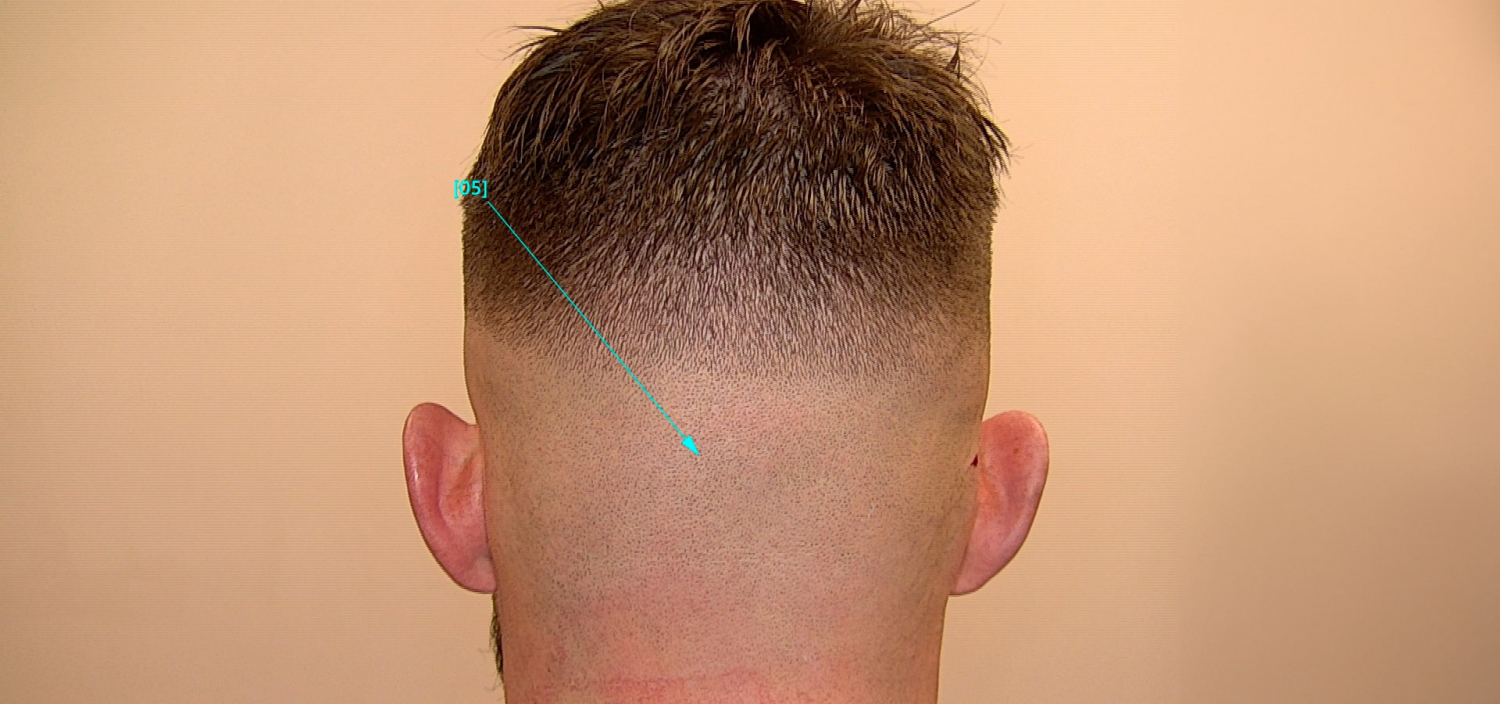Limited Shave FUE


Limited Shave FUE
Do you suffer from a little hair loss, have a bald patch, or a receding hairline and you want a discreet solution? By opting for a limited shave FUE, you have the opportunity to use a recent and innovative technique, which will not disrupt your social life.
In fact, this technique makes it possible to harvest the implants without any visible shaving of the scalp, whether in the donor area or the implantation area. This is a considerable advantage as it allows an early resumption of socio-professional activities in complete discretion.
What are an unshaven and limited shave FUE transplant? How does your first consultation session take place? What are the different stages of limited shave FUE transplant? What are the advantages and disadvantages? What results can be expected?
By going through these few lines, you will be able to learn about limited shave FUE transplant. We invite you to find out more to help you make a free and informed choice.
What is a limited shave FUE transplant?
As indicated in the introduction, an FUE transplant with shaving limited to the donor area is a hair transplant technique with shaving limited to a smaller area, i.e. the donor area, without involving the recipient area.
This technique is possible for young subjects, who increasingly have short, layered haircuts, and allows the length of the hair to be maintained on the other parts of the skull. A gradual top parting should be performed before the operation, to ensure that the haircut is socially presentable.
Alternatively, some centres offer a limited shave over a smaller area, so that the adjacent hair can conceal the removal. Although this technique was in vogue a few years ago, it exposes the patient to the risk of the donor area becoming visible if they change their hairstyle (very short hair). It cannot be used for major corrections, as the number of grafts to be harvested is more limited. Beyond that, the area to be shaved is too large and cannot be camouflaged by neighbouring hair. This alternative is therefore conceivable for women, who wear their hair very short more rarely than men.
What we don't recommend :

Visible harvesting if hair is very short.

What we do :
The procedure with complete shaving of the donor area, without touching the receiver area, is the choice of our centre, as the shaved area is more extensive and the harvesting more spread out over the skull, which causes fewer variations in density.
Shaving limited to the donor area

An FUE hair transplant involves removing hair follicles from areas not affected by alopecia (usually at the back of the head, occipital area, and temples). They are then transferred to the bald areas of the scalp.
The FUE technique practiced in our NHT Europe centre is minimally invasive; it is the least invasive of the procedures along with the long hair FUE procedure which does not involve any shaving. Hair follicle extraction is performed using a micro-punch. It is a circular, punch-type surgical instrument that micro-cores the scalp and frees the follicular units from all their skin and fatty attachments. It is thanks to this instrument, in particular, that you will only have infra-millimetre microdots as scars, barely perceptible to the naked eye.
As the name suggests, a limited shave FUE does not require that the harvest area be shaved over a large area, and it will always be covered at the end of the harvesting process by the adjacent hair.
How does the first consultation session for a limited shave FUE transplant take place?
The first medical consultation is a very important step. At our NHT Europe centre in Avignon, we make a point of making this session essential, because it alone allows a careful examination of the scalp.
During this first session, we are at your disposal. We ask you about your needs, your expectations and your desires. The main objective is to guide you towards developing a coherent and realistic project..
We then examine in detail the degree of baldness, the quality of the scalp, its flexibility, hair density, hair texture and other factors. The aim is also to study the donor area, in particular the thickness of your hair (more hair is needed to cover an area with fine hair than with thick hair) and the recipient area (implantation area). This is a crucial step.
This consultation lasts 1 hour to 1 hour 30 minutes. This is a very important step at our centre.
We will also work out your treatment plan together. The budget you want to allocate to this procedure is also an important part of the decision because this procedure is a little more expensive than a procedure that involves shaving (intermediate cost between shaved and unshaven procedures).
You will see that during this first consultation session, we will work together to find the optimal solution that will meet your expectations. We do not influence any of our patients and take into account everything that is crucial to us in a hair transplant. We may even have to advise against a hair transplant depending on the results of your medical examinations.
What are the different stages of a limited shave FUE hair transplant?
The first step in a hair transplant with shaving limited to the donor area is to check the donor area (the area from which the grafts will be taken, which makes it possible to confirm the number of grafts planned).
The second stage is harvesting: During this stage, a local anaesthetic is administered, then the follicular units are dissected with punches (motorised procedures) and extracted from the scalp using microsurgical forceps.
The third stage involves checking the integrity of each graft under a microscope, sorting the grafts of 1, 2, 3 or 4 hairs and placing them in a compartmentalised cup containing physiological saline at a temperature of between 2 and 6 degrees. Each follicular unit comprises between one and four hairs.
The fourth stage: implanting the grafts. Here, the surgeon implants the grafts, scrupulously respecting the direction of growth. Using a very fine instrument (sharp implanter), the graft is implanted at the same time as the micro-perforation in the bald area. Even if the patient has retained hair of the usual length on his or her head, this can be done without damaging the native hair.
A thin bandage is often applied at the end of the procedure, to protect the treated areas and avoid staining the patient's clothing.
The fifth stage is an immediate post-operative check of the residual density in the donor area, and verification of the number of grafts harvested per square centimetre.
A check-up appointment will be scheduled 15 days after the operation, but you can contact us at any time if you have any questions or need further explanations in the meantime.
Nevertheless, the post-operative effects of an FUE transplant with shaving limited to the donor area are minimal.
Essentially, small scabs form on the grafted hair before falling off 5 to 7 days later. Swelling may occur, but this is rare and disappears after 3-4 days.
What are the advantages and disadvantages of a limited shave FUE hair transplant?
There are many advantages to FUE hair transplantation.
Firstly, this technique makes it possible to correct alopecia with a minimum of effort. The results are discreet, definitive and highly aesthetic, particularly in young subjects with receding hairlines, which means that there is no need to change their look.
The absence of shaving in the recipient area means that the graft is concealed, and masks the small scabs present in the first few days.
Up to 3,500 grafts can be extracted during a single session, and the donor area is just as large as with the technique that involves shaving the entire skull.
The only drawback is that many clinics offer a shave limited to a very small area, a technique that exposes the visibility of the harvest when changing hairstyle.
What results can you expect from a limited shaving hair transplant?
FUE with shaving limited to the donor area makes it possible to cover a bald area naturally and densely. Your transplanted hair will grow back for the rest of your life, as it comes from a part of the scalp where hair persists for the rest of our lives.
Your new hair will appear 3 to 4 months after the transplant, but you need to wait 12 months to obtain the definitive result.
The most frequently asked questions by our patients about limited shaving hair transplants:
How long is the procedure?
This is a longer procedure than FUE with complete shaving because the implantation time in the recipient area is longer. Particular attention must be paid to the native hair present, so as not to damage it.
Many centres believe that this densification between the native hairs present would cause them to disappear. Avoiding this is entirely possible, and requires special know-how that is mastered at the NHT centre.
Will I feel pain during the procedure?
No. A limited shave FUE hair transplant is minimally invasive and performed under local anaesthesia. If you are particularly sensitive to pain, we can apply an anaesthetic cream beforehand to make the local anaesthetic injection completely painless.
Are there any special precautions to be taken before the operation?
An antiseptic shampoo the morning of the transplant. In addition, it is strongly recommended to avoid taking any stimulants (coffee, tea, alcohol) the day before and the morning of the procedure. Finally, it is best to have the hair of a suitable length on the back part of the skull to hide the clipped areas.
How long after the procedure can I wash my hair?
Hair should be washed with shampoo the first day after the operation and several times a day for the first 3 days.
Convenience
- Undetectable harvesting area as well as the grafted area the day after the procedure.
- Early resumption of social life.
- Identical end result.
- Longer and more expensive procedure.
TYPE OF ANESTHESIA: local
AVERAGE DURATION OF THE PROCEDURE: it depends on the number of grafts (maximum 1500 grafts per day)
DONOR AREA: occipital, parietal or temporal
SHAVING LENGTH: 1mm
RESUMPTION OF SOCIAL ACTIVITY: immediately
RESUMPTION OF SPORTING ACTIVITY: after 10 days
Please note that the NHT center is closed from August 4 until August 24 inclusive.
An answer will therefore be provided to you by a doctor from the center as soon as it reopens.
NHT EUROPE


